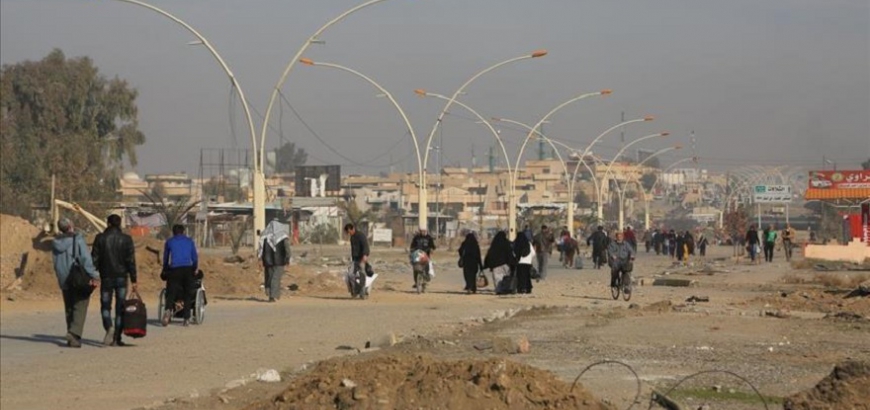Having fled the fighting between rebels and regime forces and their allies, residents of areas in opposition-controlled Daraa have begun to return to their homes after being displaced in recent months.
With the pace of bombardment and clashes slowing after the southern truce agreed upon between the United States, Russia and Jordan on July 8, some residents have begun to return and repair their damaged homes, while the local authorities are working to reopen routes and clear rubbles.
Oman al-Muhameid, a Daraa city resident, said that he was forced to return to his home and repair it given the difficult living conditions which he endured in the camps in the surrounding plains, despite the fact that his home had been hit by a number of helicopter and artillery strikes.
Muhameid hopes that the cease-fire will continue in southern Syria to decrease the suffering of residents and displaced, but his fear was obvious that the Assad regime and its allied militias would return and resume their bombardment of the city’s districts.
Some residents have returned to the city districts and have reopened some stores in the Daraa camp area and the Al-Sidd road, while Syrian Civil Defense, also known as the “White Helmets,” machinery have started to clear rubble and fill craters resulting from airstrikes.
Hassan al-Farouq, head of the Syrian Civil Defense center in Daraa, said that their operations had been ongoing for days in cooperation with the local civilian authorities in order to restore some life to the city and to clear the rubble of homes and open roads and clean the streets.
Farouq said that hundreds of homes had been destroyed completely by airstrikes and rockets over the last six months, and the bombardment had also included the city’s infrastructure, which led to electricity and water being cut from residential areas.
He added that Civil Defense teams had faced numerous difficulties during their work, most prominently the remnants of cluster bombs and mortar strikes. He said the team was working to “remove unexploded munition” from residential areas and surrounding farmlands.
This article was translated and edited by The Syrian Observer. Responsibility for the information and views set out in this article lies entirely with the author.


